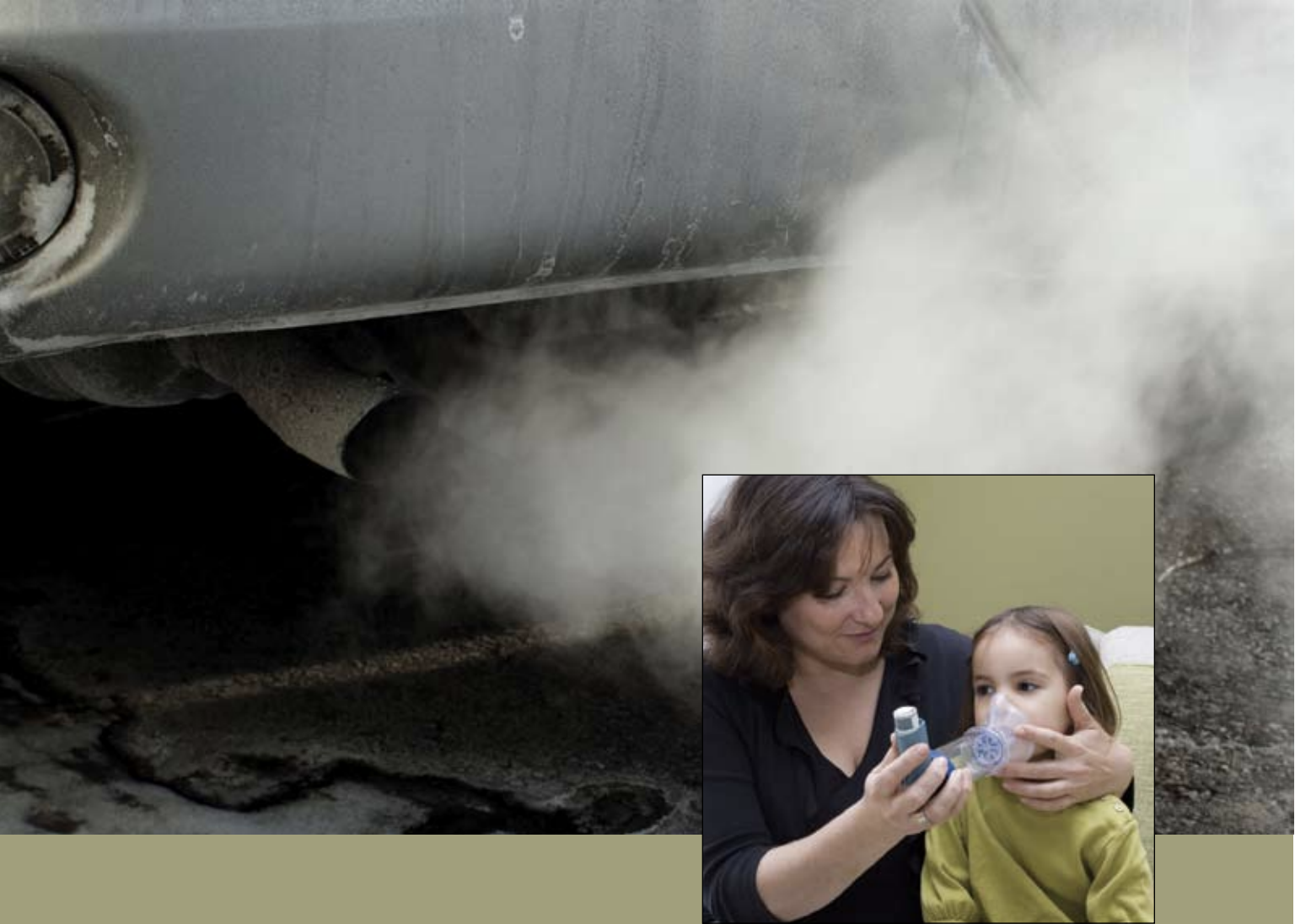
Clean Cars, Cleaner Air
Curbing Air Pollution and Protecting Public Health in Minnesota with the Clean Cars Program
Air pollution from cars and light-duty trucks in Minnesota harms public health, contributing to cancer, asthma and respiratory disease. In addition, carbon dioxide emissions from cars contribute to global warming that threatens the future of Minnesota's environment. Clean Cars, Cleaner Air reviews the impact of automobile air pollution on public health in Minnesota and describes how state adoption of the Clean Cars Program can curb pollution and benefit the state's consumers and the economy.

Downloads
Air pollution from cars and light-duty trucks in Minnesota harms public health, contributing to cancer, asthma and respiratory disease. Moreover, pollution from cars and light-duty trucks contributes to global warming, which threatens much of what makes Minnesota special, from the Boundary Waters wilderness to our vast forests to the health of our 10,000 lakes.
The good news is that automakers can make cars and light-duty trucks that release less pollution, without compromising the performance or availability of any vehicle models. By requiring car manufacturers to build and sell cleaner cars and light-duty trucks, Minnesota can improve its air quality and protect special places from harm. Through 2025, switching to cleaner cars and light-duty trucks could prevent as much pollution as removing half of all the light-duty vehicles in Minnesota from the road for a full year. Moreover, adopting the Clean Cars Program can save consumers money at the pump and reduce our dependence on oil.
Air pollution from cars and light-duty trucks in Minnesota contributes to respiratory disease and cancer.
• State air quality officials rated the air quality in the Twin Cities and the Rochester area as “good” on only half the days of 2007. In areas such as Duluth, Brainerd and Marshall, air quality rated less than good on at least one out of every five days during 2007. Long-term exposure to elevated levels of pollution can cause cancer, exacerbate asthma, and contribute to respiratory illness in otherwise healthy people.
• Gasoline-powered highway vehicles produce more than half of the state’s emissions of toxic benzene, along with a fifth of Minnesota’s emissions of smog-forming nitrogen oxides, and a quarter of the state’s emissions of volatile organic compounds, which also contribute to smog.
Air pollution from cars and light-duty trucks threatens Minnesota’s special places and contributes to global warming.
• Winters in northwest Minnesota warmed by 12° F between 1960 and 2001. The ice on Minnesota’s lakes has been breaking open an average of 1.3 days earlier every decade since the mid-1960s. Scientists at the University of Minnesota predict that the Boundary Waters habitat could change to look more like that of southern Minnesota in 50 years if global warming continues unchecked.
• Transportation is responsible for a quarter of Minnesota’s global warming pollution and emissions from cars and light-duty trucks have been increasing rapidly. Between 1990 and 2005, carbon dioxide emissions from gasoline use in transportation increased by 39 percent.
Air pollution from cars and light-duty trucks is preventable.
• Readily available technology can make vehicles cleaner and more efficient. Through advanced emission controls and simple energy-saving changes, cars and light-duty trucks can emit less pollution and travel further on a gallon of gas, helping to reduce air pollution.
• Fourteen states across America have taken action to increase the use of cleaner vehicle technology through a policy known as the Clean Cars Program. In these states, cleaner, more efficient versions of many well-known vehicles, including large vehicles such as SUVs as well as flex-fuel vehicles (FFVs) operating on E85 ethanol, can be purchased.
The Clean Cars Program will reduce air pollution from Minnesota’s cars and light-duty trucks.
• Air pollution officials in the Northeastern states estimate that the Clean Cars Program will cut smog-forming nitrogen oxide pollution from cars and light-duty trucks by 15 percent by 2025 and will reduce toxic air pollution by 8 percent or more compared to current federal standards.
• Under the Clean Cars Program, by 2025 Minnesota would avoid 13.1 million metric tons of carbon dioxide pollution that contributes to global warming. That is as much pollution as would be averted by taking 2.5 million vehicles off the road for a year.
Clean cars and light-duty trucks benefit the economy and consumers.
• The Clean Cars Program would reduce Minnesota’s oil consumption by as much as 785 million gallons through 2020, reducing America’s dependence on oil.
• This translates into savings for the consumer. At prices of $1.74 per gallon, Minnesota drivers would save $1.4 billion on gasoline between now and 2020.
• Under the program, a Minnesota consumer who buys a new car in 2016 will save $3 to $7 per month, with lower spending on gasoline outweighing the higher costs of his or herauto loan. After the loan is paid off, the consumer will save $24 to $27 per month compared to a car purchased under old federal fuel economy standards.
Minnesota should require auto manufacturers to produce and sell cleaner cars and light-duty trucks.
Minnesota should adopt the Clean Cars Program to reduce air pollution from on-road passenger vehicles, and should take other steps to reduce the impact of driving on Minnesota’s air and on our state’s natural treasures.
Authors
Tony Dutzik
Associate Director and Senior Policy Analyst, Frontier Group
Tony Dutzik is associate director and senior policy analyst with Frontier Group. His research and ideas on climate, energy and transportation policy have helped shape public policy debates across the U.S., and have earned coverage in media outlets from the New York Times to National Public Radio. A former journalist, Tony lives and works in Boston.
Siena Kaplan
Policy Analyst
Travis Madsen
Policy Analyst
Sarah Payne
Policy Analyst
Kari Wohlschlegel
Policy Associate
